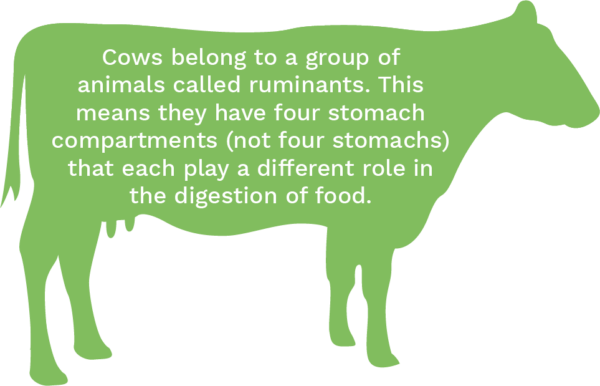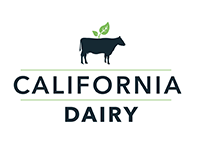Researchers found that at least 70 distinct byproduct feeds are used on California dairy farms. In total, California dairies included about 5.5 million tons of byproduct feeds in their lactating and dry cow rations. With a ration share of approximately 38% of feed on California dairies, byproducts were found to be the largest feed category by cost and dry matter share.
The inclusion of byproducts in dairy rations allows a productive outlet for many materials that may otherwise be sent into the waste stream. If dairies did not use byproducts for feeds, much more land and water resources would need to be dedicated to dairy feed production. For example, if no byproducts were available, rations would need to include additional amounts of feed options like alfalfa hay and corn grain.
Ruminants Explained

Research estimated that for alfalfa hay, for example, an additional approximate 4 million acre-feet of water would be required for additional alfalfa hay production. Research also found that if almonds hull byproducts were not used in dairy feeds and replaced with corn silage to match nutritional contributions, an additional 181,000 acres of land and 665,000 acre-feet of irrigation water would be required.
Therefore, a key benefit of byproduct use in dairy feeds is the reduced environmental and resource pressures on crop land and especially irrigation water in the San Joaquin Valley.
Feed to Food
Hover over the images to learn how California dairy cows upcycle byproducts into nutrient-rich foods.
“Cows are natural bioprocessors and upcyclers of nutrients. As a result, cows will continue to play essential roles in healthy and sustainable food systems all over the world. This study demonstrates the environmental benefits in California, where dairy farmers have been especially successful in recycling and repurposing resources.”
– Dr. Kevin Comerford, Chief Science Officer for California Dairy Research Foundation


